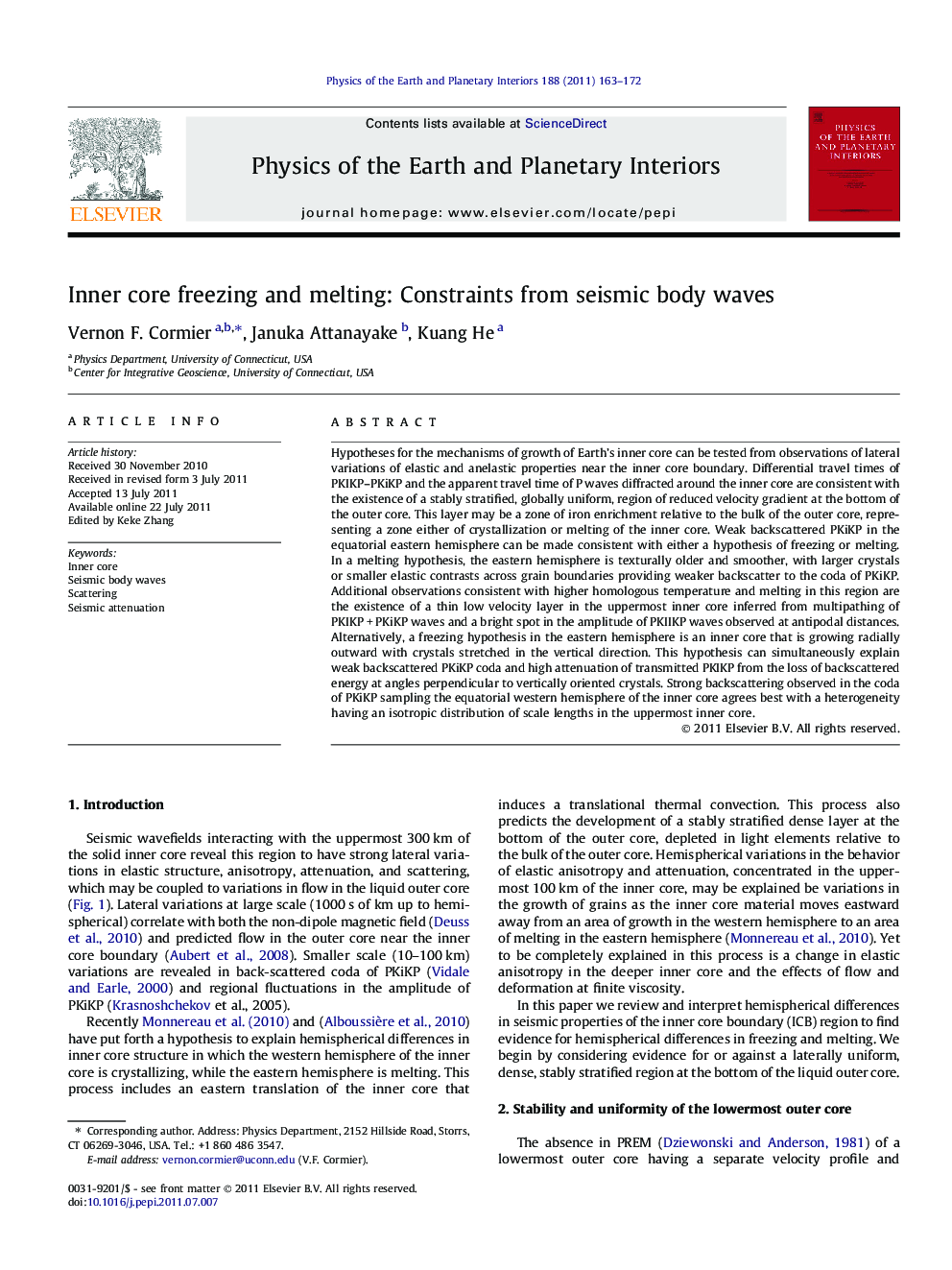| کد مقاله | کد نشریه | سال انتشار | مقاله انگلیسی | نسخه تمام متن |
|---|---|---|---|---|
| 4741901 | 1641542 | 2011 | 10 صفحه PDF | دانلود رایگان |

Hypotheses for the mechanisms of growth of Earth’s inner core can be tested from observations of lateral variations of elastic and anelastic properties near the inner core boundary. Differential travel times of PKIKP–PKiKP and the apparent travel time of P waves diffracted around the inner core are consistent with the existence of a stably stratified, globally uniform, region of reduced velocity gradient at the bottom of the outer core. This layer may be a zone of iron enrichment relative to the bulk of the outer core, representing a zone either of crystallization or melting of the inner core. Weak backscattered PKiKP in the equatorial eastern hemisphere can be made consistent with either a hypothesis of freezing or melting. In a melting hypothesis, the eastern hemisphere is texturally older and smoother, with larger crystals or smaller elastic contrasts across grain boundaries providing weaker backscatter to the coda of PKiKP. Additional observations consistent with higher homologous temperature and melting in this region are the existence of a thin low velocity layer in the uppermost inner core inferred from multipathing of PKIKP + PKiKP waves and a bright spot in the amplitude of PKIIKP waves observed at antipodal distances. Alternatively, a freezing hypothesis in the eastern hemisphere is an inner core that is growing radially outward with crystals stretched in the vertical direction. This hypothesis can simultaneously explain weak backscattered PKiKP coda and high attenuation of transmitted PKIKP from the loss of backscattered energy at angles perpendicular to vertically oriented crystals. Strong backscattering observed in the coda of PKiKP sampling the equatorial western hemisphere of the inner core agrees best with a heterogeneity having an isotropic distribution of scale lengths in the uppermost inner core.
► Mechanisms for the growth of Earth’s inner core are tested with seismic observations.
► Travel times find a global layer of reduced P velocity gradient above the inner core.
► This layer may be a zone of iron enrichment relative to the bulk of the outer core.
► Weak backscattering from the eastern hemisphere agrees with freezing or melting.
► An isotropic distribution of scale lengths best explains strong backscattering.
Journal: Physics of the Earth and Planetary Interiors - Volume 188, Issues 3–4, October 2011, Pages 163–172